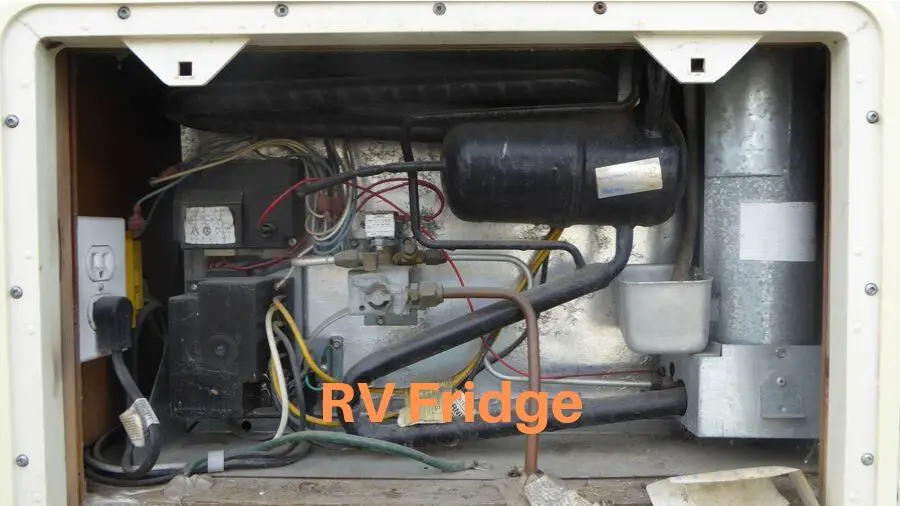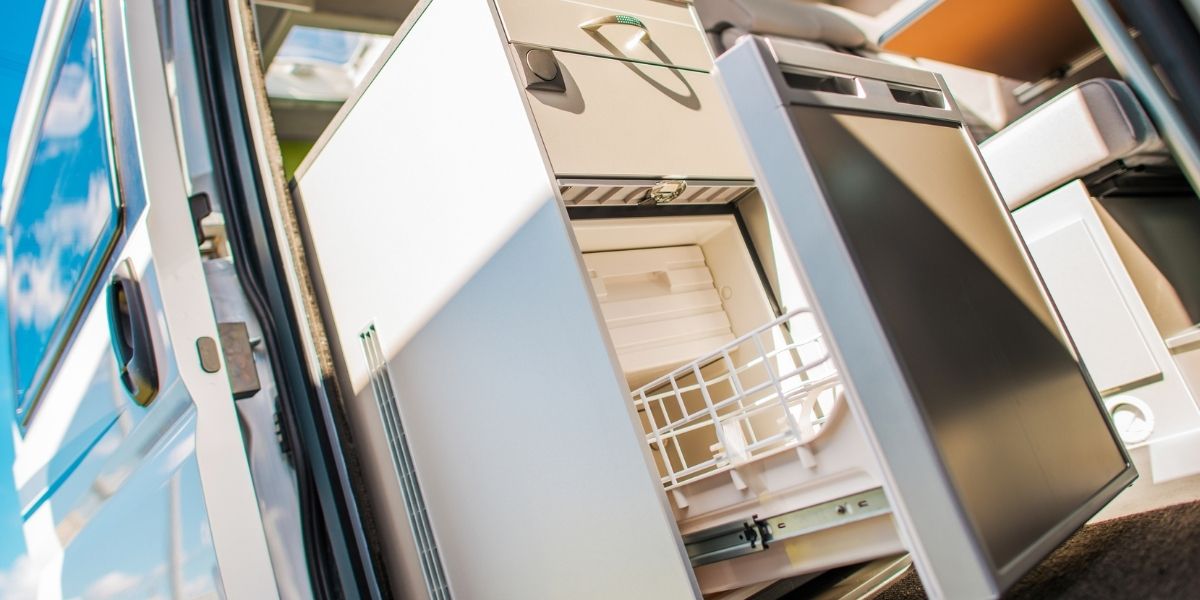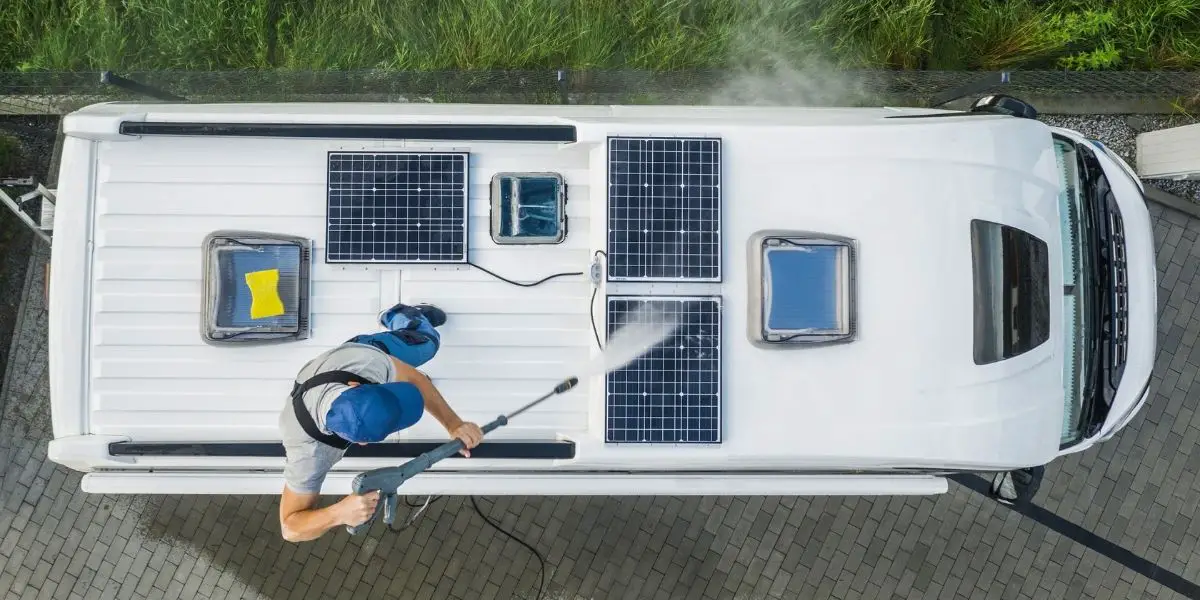Keeping your fridge cold when driving is a common question. The typical solution for many Experienced RVers is to keep their RV fridge cold is to leave it on propane while they are driving after they have cooled the fridge down at home while it has been plugged into 110 AC for at least 4 hrs, but more typically 24 hrs, then loading cold food into the fridge and finally turning the Fridge to run on propane (lp). If you feel uncomfortable with that option you can always choose to drive with it off, as food in your RV fridge stays cold for up to 8 hrs. After doing some research in reading RV fridge manuals from Dometic and Norcold, as well as reading the National Fire Protection Associations report on Fire Damage and Loss Assessment of Recreational vehicles (RV’s), I feel that running your fridge on propane is acceptable risk. According to the NFPA report, the bigger risk is a malfunction of the fridge, though it is relatively small.
If you choose to run your propane on propane while driving, remember to shut off propane when fueling your vehicle as a gas station, when going through long tunnels, and ferries. You will be reminded typically when you enter these areas except for fueling your vehicle.
What Is The Fastest Way To Cool Your RV Fridge?
The typical RV fridge has two or three ways to keep it cool. Of the 3 methods, Propane is the fastest and most efficient way to cool your absorption RV fridge, which could be achieve in as little as 3 to 4 hrs. So, when I am camping at a campground that offers AC power, I always choose shore power over propane, since it’s paid for. Running an RV fridge on 12-volts may never cool it to as cold as AC power or propane.
How Cold Should Your RV fridge Be?
According to several Norcold Owner’s manuals and the U.S. Food & drug administration the ideal refrigerator temperature in the compartment of your RV fridge should be between 33°F to 38°F (0°C to 3.3°C) when operating normally. As the temperatures over 40°F (4.4°C) increases the changes of pathogens such as listeria. The Freezer should be at 0°F to 1°F (-18°Cto -17°C) for optimal temperatures to keep your frozen food solid and ice cream and freezes frozen. I set my fridge to just above slightly freezing. If you are new to this, I use the slightly frozen lettuce to tell me that it is too cold in my RV fridge. Of course, then I warm up the fridge a little on the setting. Which is somewhere near the middle of the fridge setting.
How long does it take to Cool my RV fridge to get cold?
In my experience an empty RV fridge that is set on propane as the fuel type and the coldest temperature setting should achieve the anticipated temperature of 29°F to 33°F (0°C to 3.3°C), in 3 hrs to 4 hrs. On 120-volt AC it takes a little longer at 4 to 5 hours to achieve the same results, however on 12-volt DC it took a full 24-hrs to achieve that same goal. This is the break down from my testing on my own fridge in my motorhome.
| Power Type | Time to cool |
|---|---|
| Propane | 3 hr to 4 hrs |
| AC power (campground or home) | 4 to 5 hrs |
| 12-volt DC power | 24 hrs |
So, I measure how long it took to be sure my experience was accurate. I ran a test today to see how long it took for my fridge to get cold on 120-volt AC power. The Fridge was empty on starting this test and the temperature setting was set to very cold.
This test was very basic, and I did not have any real controlled variables other than time.The temperature of my RV fridge when I turned it on was at 62°F
The fridge dropped to 29°F after 4 hrs, so it took much less time than I had expected.
What’s interesting was that after 24 hrs the temperature of the fridge dropped to 18°F.
Why Does My RV Fridge Keeps Freezing My Food?
There are several reasons for this:
- It could be a faulty thermostat issue with your RV fridge. If you suspect, then check out this article on trouble shooting your RV fridge.
- It could be that the thermostat is set too cold, so turn it down just a bit.
- If only some items are frozen, such as soft leafy green and certain vegetables, then it could be that the fridge is too full or your items in your fridge needs to be re-arranged with the meats and cheeses closer to the cooling fins, while the leafy greens are furthest away.
” sizes=”(max-width: 550px) 100vw, 550px” alt=”” width=”550″ height=”440″ data-id=”35662″ data-init-width=”1000″ data-init-height=”800″ data-width=”550″ data-height=”440″ data-ezsrcset=”https://rvchronicle.com/wp-content/uploads/2021/06/f1.jpg 1000w,https://rvchronicle.com/wp-content/uploads/2021/06/f1-300×240.jpg 300w,https://rvchronicle.com/wp-content/uploads/2021/06/f1-768×614.jpg 768w” data-ezsrc=”https://rvchronicle.com/wp-content/uploads/2021/06/f1.jpg” />
I break down my fridge into 3 zones of coldness: Freeze Zone, Cold Zone, and Cool Zone.I place my meats and cheeses closer to the fins of the fridge in the freeze zone. Then I place the harder vegetables and eggs mid distance from the fins in the Cold Zone and finally the lettuce and sensitive leafy greens in the bins or the furthest away from the Rv fridges fins in the cool zone. Another way to help reduce freezing leafy greens is to place everything in Tupperware containers.

How long will An RV Fridge Stay Cold Without Power
On average, your fridge potentially losses up to 4 degrees every hour. This means, depending on your RV Fridge, it could stay cold for around 6-8hrs without power and possibly up to 24 hrs using ice packs and keeping the door closed. If the door is opened of the external temperature is above 100°F, it will be in less time.
Can I Run My RV Fridge On Propane While Driving
While it is not recommended to run your fridge on propane; many people do run their fridge on propane while driving and have not had any problems. As an alternative one could run their fridge on 12-volt DC power only after cooling their fridge down to the range of 29°F to 33°F (0°C to 3.3°C) on 120-volt AC power for at least 4 hrs prior to leaving on your travel. Sometimes, while crossing on a ferry, the propane needs to be shut off, in that case it is fine to move to 12 volt. While on 12 volts the fridge does not function at it’s optimal rate unlike on Propane. If you want to get more detail on this subject read this article on how your fridge works.
Can I run my RV fridge off my propane/gas generator while driving?
While it is entirely possible to run an RV fridge off a generator while driving, it might be easier to just run the fridge off of your 12 volt or propane while driving, rather than to have a generator running to cool your fridge in your RV. The use of propane to cool an RV fridge is more efficient than to running the onboard generator and having it produce AC power to run the fridge. Just my thoughts on the matter.
Can I run my RV Fridge on an inverter while driving?
It is certainly possible to wire 12-volt DC from your RV batteries to power an inverter to create 120-volt AC power, while using the alternator of the vehicle to provide the power to while driving. It would keep the fridge as cold as running it off propane while driving to your location. However, the design of absorption fridges is not as efficient while running on 120-AC power but produces fast cooling. The right sized inverter would be required to produce the necessary watts to maintain a constant flow of power, as well as a high output alternator would be required. A typical ammonia RV fridge draws about 370 to 600 watts while running far less efficient than a home compressor fridge that draws about 100 watts an hr or less. In the end, I’m not sure if the efficiency offsets the cost to run it this way.
Inverter
Tips I take to make sure that my fridge is functioning properly
- Thoroughly clean your RV fridge is clean, inside, and out. Dust and debris can affect the cooling system of your fridge on the outside. Keeping the insides clean not only keeps your food safe from mold and other microbes, but it also ensures that there isn’t anything blocking the air flow inside.
- Make sure the RV fridge is level and there’s proper ventilation on the outside of the fridge. If you’re curious to know why, I explain it in another article (HERE).
- Following your RV fridge manufacturer’s instructions, make sure to switch your empty RV fridge on the day before to start cooling.
- Check the rubber seal of your refrigerator door.
- When filling up your fridge, make sure that the things inside are:
- Already frozen/chilled – this keeps the internal temperature of your RV fridge low since it doesn’t need to make that much effort to cool the items you put in it.
- Properly arranged/stacked – Because your RV fridge is off, there won’t be any cold air circulating inside. Organizing the contents of your RV fridge not only allows the pre-chilled items to maintain the temperature, but it also allows less movement inside the fridge especially during the drive.
- If you have frozen food items, do put them in your fridge frozen. This will help keep the internal temperature low.
- Set your fridge to the coldest setting a few hours before departure. Compared to leaving the fridge in this setting all night, this will help avoid freezing everything before you shut off the fridge off.
- Make sure your fridge is closed all throughout the drive. If you really need to open the fridge, do keep it to a minimum. Opening the fridge will release the cooler air inside your RV refrigerator, and will also increase the internal temperature of your fridge.
We’re assuming that you know the type of fridge you have and how it works. But, if something doesn’t seem right with the temperature of your RV fridge (or the unit itself) even after switching it on the day before, do check out the other article I made on Troubleshooting Your RV Fridge to see if there’s something you can tweak before you go on your trip.
Conclusion
Realistically speaking, and I’m assuming you know how long your drive will be and what food/drinks you’d like to keep cold during your drive, if you get to plan the route properly there shouldn’t be a need to worry about food spoilage or even damaging your RV fridge.










